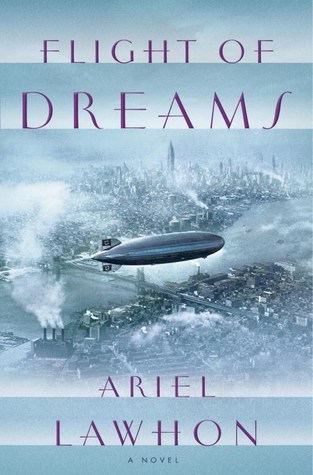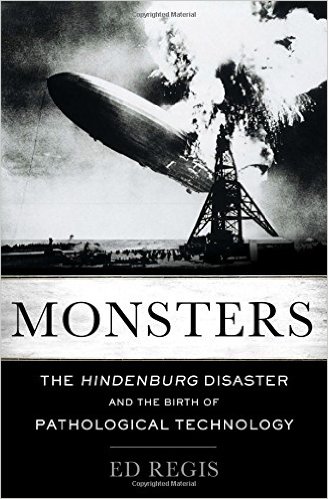On this date in history in 1937, the German passenger airship The Hindenburg caught fire and was destroyed during its attempt to dock with its mooring mast at Naval Air Station Lakehurst in Manchester Township, New Jersey. Of the 97 people on board (36 passengers and 61 crewmen), there were 35 fatalities (13 passengers and 22 crewmen). One worker on the ground was also killed, making a total of 36 fatalities.
Not too long ago I was enjoying a recent New Yorker article entitled Helium Dreams in which reporter Jeanne Marie Laskas took note of a new generation of airships that are currently in the process of being created. While the Hindenburg disaster certainly put a crimp in any plans for airship expansion (and I was a bit disappointed to hear that the top of the Empire State Building wasn’t actually supposed to be an airship docking station as I’d so often heard). Indeed, you could be forgiven for thinking airships were effectively a thing of the past. Years ago my husband and I got readings from an old phrenology machine that would tell you by the bumps on your head what your ideal occupation might be. For my husband: Zepplin attendant. So there you go.
Yet airships may be making a comeback and they’ve always remained a part of our collective imagination. To remember the Hindenburg properly, here’s a little reading list of all things airship.
Airborn by Kenneth Oppel
Authors that love airships really love airship. And Kenneth Oppel is one of the best. Set in a world where airships never went away, it will forever be associated in my mind with the smell of tangerines (in this world a helium-like gas smells like tangerines when it escapes). The plot has a good description too: “Matt, a young cabin boy aboard an airship, and Kate, a wealthy young girl traveling with her chaperone, team up to search for the existence of mysterious winged creatures reportedly living hundreds of feet above the Earth’s surface.” Place your copy on reserve here.
Flight of Dreams by Ariel Lawhon
Truth be told, I’m a little surprised this idea didn’t come to someone sooner. “Let’s do a story like The Titanic . . . on The Hindenburg!” Which on paper just sounds terrible. Yet as it happens, Lawhon crafts a rather loving homage to the great ship. As Kirkus put it in their review of the book, “As the disaster inches closer with every chapter—each begins with a countdown in days, hours, and minutes—Lawhon evokes the airborne luxury of the ship—the meals, the cocktails, the smoking room, and the service—in such detail that you end up feeling a little sad that the stately flight of the Hindenberg marked the end of passenger travel by airship forever. A clever, dramatic presentation of a tragic historical event. Suspenseful and fun.” Place your copy on reserve here.
Monsters : The Hindenburg disaster and the birth of pathological technology
by Ed Regis
In hindsight, it’s a little weird that airships full of highly flammable gas were ever thought of as a great idea. Talk about a disaster waiting to happen! In this book author Ed Regis explores the question of how a technology now so completely invalidated (and so fundamentally unsafe) ever managed to reach the high-risk level of development that it did. Through the story of the zeppelin’s development, Regis examines the perils of what he calls “pathological technologies”–inventions whose sizeable risks are routinely minimized as a result of their almost mythical allure. Place your copy on reserve here.
We interrupt this broadcast : the events that stopped our lives– : from the Hindenburg explosion to the attacks of September 11 by Joe Garner
A fair litany of disasters. Recounts the details of forty-three significant events of the twentieth century, each with from-the-scene photographs; and features two compact discs that contain over two hours of audio from the events as they were broadcast live. Place your copy on reserve here.




